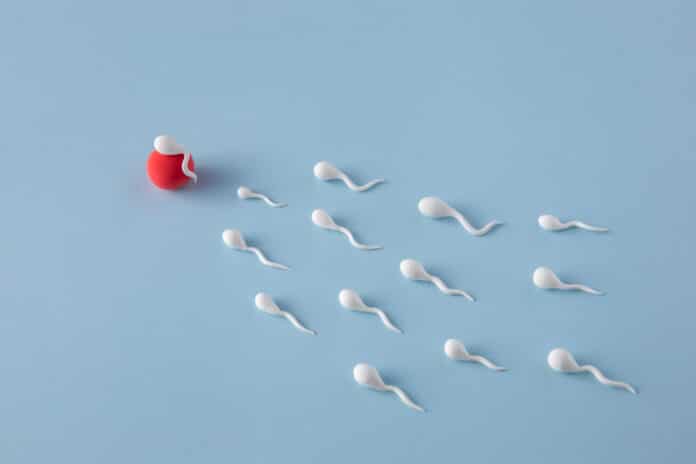Previous studies have shown that semen quality is affected in the short term following a COVID infection. However, none have followed men for a longer period.
According to new findings presented today (Monday) at the 39th annual meeting of the European Society of Human Reproduction and Embryology (ESHRE), men have reduced sperm counts and fewer swimmable sperm more than three months after suffering from a mild COVID infection.
The quality and concentration of sperm did not appear to improve after an average of 100 days following SARS-CoV-2 infection, although additional sperm would have been created during that time.
Professor Rocio Núñez-Calonge, scientific advisor at UR International Group at the Scientific Reproduction Unit, Madrid (Spain), said, “We assumed that semen quality would improve once new sperm were generated, but this was not the case. We do not know how long it might take for semen quality to be restored, and COVID may have caused permanent damage, even in men who suffered only a mild infection.”
Scientists observed that even though they had recovered and the infection was only minor, semen quality in some men- receiving assisted reproductive treatment at clinics in Spain- was poorer after COVID infection than before. So they decided to look into whether COVID had anything to do with low sperm counts.
The scientists enrolled 45 males who visited six reproductive clinics in Spain between February 2020 and October 2022. The clinics received information from the study of semen samples taken before the men were infected, and all had a confirmed diagnosis of mild COVID.
After infection, between 17 and 516 days later, another sample of semen was collected. The median (mean) interval between the pre-and post-COVID samples was 238 days, and the mean (median) age of the men was 31. Before analyzing samples collected more than 100 days after infection, scientists examined all samples collected up to 100 days after infection.
They discovered a statistically significant difference in sperm count (down 37.5% from 160 to 100 million per milliliter of semen), sperm concentration (down 26.5% from 68 to 50 million per ml of ejaculate), total motility (the ability to move and swim forward) (down 9.1% from 49% to 45%), and the volume of live sperm (down 5% from 80% to 76%).
Prof. Núñez-Calonge said motility and the total sperm count were the most severely affected. Half of the men had total sperm counts 57% lower after COVID than their pre-COVID samples. The shape of the sperm was not significantly affected.
The concentration and motility of the sperm had not changed over time in the group of men who gave samples more than 100 days following COVID, the researchers discovered.
Permanent damage brought on by the virus, even in moderate infection, maybe the reason for the COVID infection’s continued impact on semen quality in this later period.
Prof. Núñez-Calonge said, “We believe clinicians should be aware of the damaging effects of the SARS-CoV-2 virus on male fertility. Interestingly, this decrease in semen quality occurs in patients with mild COVID infection, which means that the virus can affect male fertility without the men showing any clinical symptoms of the disease.”
“It is known that the SARS-CoV-2 virus can affect the testicles and sperm, but the mechanism is still unknown. Inflammation and damage to the immune system seen in patients with long COVID might be involved.”
“The inflammatory process can destroy germ cells by infiltrating the white blood cells involved in the immune system and reduce testosterone levels by affecting the interstitial cells that produce the male hormone.”
Scientists are looking forward to continuing studying men to measure both semen quality and hormonal status over time.
